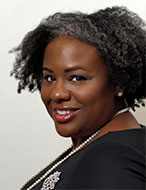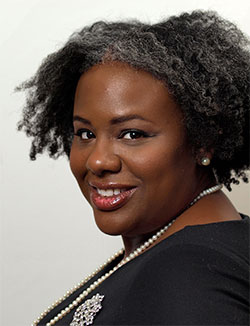

Photo courtesy of AAVMC
Lisa Greenhill
Veterinary classes today are larger, more female, and more indebted than ever before recorded by the Association of American Veterinary Medical Colleges, which has collected student census data for nearly half a century.
The association's latest annual report reflects information from an AAVMC survey of member institutions: 30 U.S. programs; five Canadian schools and 14 others throughout the Caribbean, Europe, Australia and New Zealand.
The findings show a profession undergoing demographic and economic changes. The percentage of subsidized seats at U.S. programs is dwindling, tuition is rising and new graduates are carrying unprecedented amounts of educational debt.
The upshot: Veterinary academia is costly and growing bigger in numbers of students, though there are signs the increases are slowing.
Median student debt for 2016 graduates was $156,480, up 37.2 percent since 2007 but nearly flat compared with last year. That's without calculating accrued interest.
(A footnote: AAVMC student loan figures do not reflect debt accrued by Americans studying outside the United States, where roughly 2,450 students currently are enrolled in international schools accredited by the American Veterinary Medical Association.)
Despite the prospect of six-figure debt, more students are filling veterinary college classrooms, the AAVMC reports. Total enrollment at U.S. veterinary medical institutions climbed 25 percent during the past decade to total 12,786 in 2017. Last year, it was 12,587. The growth reflects greater numbers of seats offered at the nation's 28 established schools and the opening of two new programs in 2014.
The vast majority of those seats are filled by women. The AAVMC report shows that the population of men at U.S. veterinary schools fell to a new low in 2017: 19.5 percent.
Whether those trends diminish the national pool of veterinary school applicants is a source of debate in the profession. The report shows that the applicant-to-seat ratio has dipped to 1.7 applicants for each available first-year seat. The ratio was 2.1-to-1 in 2010, and 3.29-to-1 in 1980.
Addressing the findings is Lisa Greenhill, AAVMC senior director for institutional research and diversity. She offered her perspective in a series of emails with the VIN News Service.
Q. Are the median indebtedness figures calculated with or without the students who graduate debt-free?
A: The AAVMC figures are calculated for indebted graduates only and are sourced from the colleges directly. Median indebtedness for all 2016 graduates [including those who graduated without student-loan debt] was $150,197.
Q. The AAVMC report initially showed that 18.2 percent of all students who graduated from U.S.-based programs in 2016 reportedly did so without student loan debt. However, I understand AAVMC is recalculating that finding because it may be incorrect. By comparison, a recent AVMA report show a smaller pool of debt-free graduates. (AAVMC data is gleaned from member institutions reporting on behalf of their students; AVMA figures reflect a survey completed annually by senior students.) How do you anticipate the proportion of debt-free graduates will change, as stated by AAVMC?
A: The AVMA's senior survey indicated that about 14 percent of graduates completed the professional program with no debt; that is roughly 2 percent higher than we reported in 2015 [12.4 percent]. I anticipate that our final institutionally reported number will be similar. We have seen periodic fluctuations in the number of students who manage to graduate without debt. The fluctuations could be related to cohorts of students with more personal and/or familial resources and support or scholarships. It's hard to say. As for numbers that 14 percent represents, [it's] roughly 400 of 2016 graduates in the United States.
Q. The number of seats per class is going up at the same time the percentage of in-state students is going down. Schools are increasing class sizes and the amount of tuition they’re bringing in from non-residents. What is driving this trend? What might be the impact, long-term, on the profession?
A. This is a function of the downward trend in public support for higher education. When the public no longer believes that education is a public good, funding for education declines. This has been ongoing for at least 20 years, and in reality, closer to 40 years.
The major increases in seats at the colleges have slowed; we saw the greatest increases roughly between 2000 and 2010. Historically, the rate of growth has been about 1.8 percent per year, but even with the addition of two new schools, overall seat increases have held steady between an average of 1.5 percent and 1.8 percent. Yes, the new seats have either been at new private institutions or among non-residents. There is little motivation for a state institution to launch a veterinary school because of the cost and the trend in receiving minimal public funding. I have said this before: It’s important to remember that the colleges do not set tuition. The universities do.
Nearly one-third of the colleges allow non-resident students to establish residency and pay subsidized tuition. How that happens varies across institutions.
As for the long-term effects, there are likely to be several. There has been a long concern about the profession only attracting affluent applicants with the personal and/or family resources to support the high cost of tuition. There is some evidence that this is already happening. I think another outcome will be that the average age of veterinary students will increase as prospective applicants relocate for the purpose of establishing residency prior to applying for admission and/or are individuals interested in second careers in veterinary medicine. These folks may have additional resources as well and are a little more financially mature and consider costs more critically.
Q. The applicant-to-seat ratio is 1.7-to-1. Can you tell me the significance of this? Do you foresee a time when the ratio might be 1:1, or do you predict the pendulum will swing back before then?
A: In this case, the ratio simply means that the overall number of applicants increased more than the projected number of seats this application cycle. We have no way of knowing at this time whether that is the beginning of a trend or a small blip in the would-be trend. We would hope it's a trend, but I'm not sure yet that there is really much to interpret.
I have never predicted a time when the ratio would be 1:1, and I still don't see that happening. My predictions have focused more about the overall quality of the pool, which indicate that the veterinary school applicant pool quality is quite deep for its relatively limited number. I believe that if circumstances led to a ratio of 1:1.4 or so, we would still see a fairly qualified pool. The reality is that unless what appears to be a stable, highly qualified applicant pool nosedives by nearly 4,000 applicants, I do not see the ratio dropping to a 1:1 level. Even with historical trends showing a cycle decline in applicants, I do not anticipate that a drop off would be that significant at this time.
The best way to ward off a low ratio is for the profession to cultivate an interest in the profession, nurture that interest, provide opportunities to explore the profession and support future applicants. That is a wordy way of saying we must attract and recruit the future of the profession.
Q. Men have a minor edge in the application process, representing just 17 percent of applicants but nearly 20 percent of enrolled students. Even so, the percentage of male students has dipped to its lowest point since the AAVMC began keeping track in 1967. Why do numbers of men continue to decline in veterinary academia? What can be done to correct the gender imbalance?
A: We have always said that the gender shift was caused and is sustained by a myriad of reasons. It's difficult to give a simple answer to this question. There are more women in college than men. The STEM disciplines, one of the largest feeder pipelines for the health professions, is overwhelmingly male. The dot-com era was an attractive and lucrative time for young men to leak from the pipeline. I hear a lot about the need to recruit more farm boys. I'm certainly supportive of efforts that advance targeted recruiting, but we must understand that this population is not as flush as it used to be, either. Feminized professions tend to experience a self-replicating phenomenon, much like what we see when we talk more broadly about diversity.
Until we have good research explaining the feminization of the profession, it's hard for me to suggest ways to attract qualified males to veterinary medicine. I will say that in the absence of that research, we certainly need more targeted recruitment efforts. It's important to also understand that this gendered trend persists among our students of color as well. It is a pervasive trend.
Q. It's notable that some students refuse to report their gender. Considering the gender-neutrality movement, does aiming for a male/female balance in veterinary medicine still matter?
A. AAVMC has been collecting gender/sex-based data since 1967. I think that what we are seeing is a reflection of what’s happening in broader society. We have students who identify beyond the traditional gender binary. It's not that just some applicants or students are refusing to report gender or are specifically advocating gender neutrality; rather, there is a population for whom our current methodology of collecting and reporting data is not inclusive. This is an ongoing conversation with our admissions committees and our data committee on how best to include individuals who do not identify on the male/female binary. We saw several schools report very small numbers of non-binary enrollees this year, which also explains some minor differences in student numbers.
Our goal is always going to be to advocate for relative representation. Diversity, while difficult to achieve and maintain, is a good thing, and the research is clear that the various outcomes are improved. Seeing the number of women increase among students, professionals and leaders because of the dearth of men isn't a good thing. Competition for everyone yields better students, professionals and leaders. The absence of one group doesn’t mean that we have acquired the best; it means that we should be asking some hard questions about where the others are.
Q. What do you consider to be the most significant finding in the latest AAVMC report?
A. I cannot say that there is much new in the report that has not been reported elsewhere during the last year. We have incorporated a number of new graphs, including the relative representation of men at each college; individual institution costs for the class of 2016; and the median debt amounts for indebted graduates shown with the percentage of graduates with no debt.